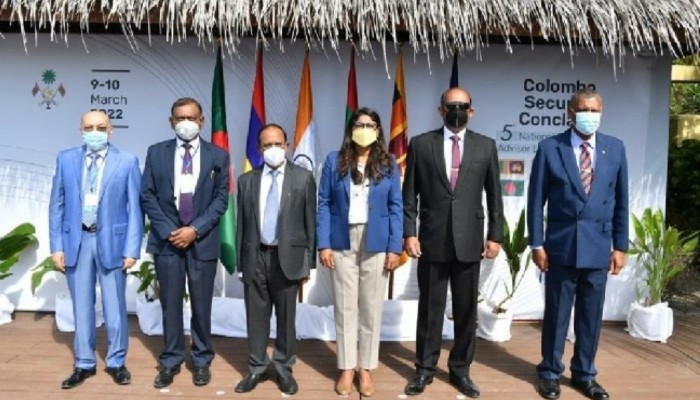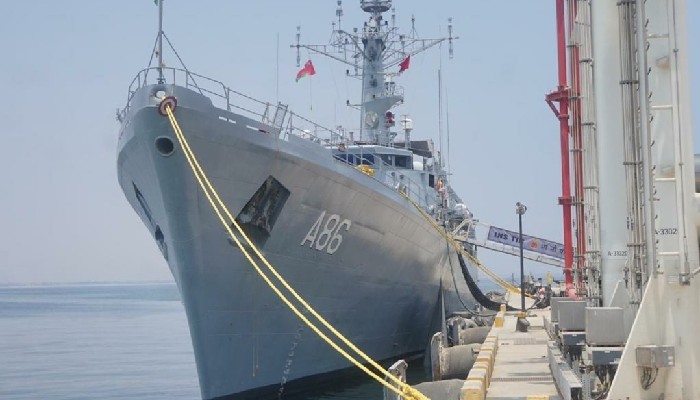China is edgy about the forthcoming India-Japan summit as it looks at it as one which will lay the ground for anti-China strategy in the Indo-Pacific region
Like a petulant house wife, China cribs at everything India does to strengthen its economy, defence and strategy. It looks at the forthcoming India-Japan summit with suspicion. Moreover, it doesn’t have gumption to acknowledge that Prime Minister Shinzo Abe who resigned on the health ground a few days back, will head Japan at the summit and he will do it as a mark of respect towards the country which is the land of Buddha and Mahatma Gandhi.
However, instead of taking that sense out of the summit which is scheduled to take place on September 10, Chinese mouthpiece, Global Times in its article, ‘India, Japan cooperation shouldn’t aim to contain Beijing,’ maintains that “the Indo-Japanese summit has several aims relating to both strategy and the economy. When it comes to strategy, the two countries expect to deepen military cooperation and promote the QUAD (Quadrilateral Security Dialogue), which is actually an anti-China forum. The summit also aims to increase economic cooperation between the two countries to reduce their economic ties with China.”
But the question is: Is it China’s prerogative to decide what the two countries should do when they hold a meeting? Both India and Japan are democratic countries and they share common cultural bonding for centuries.
With the passage of time, mutual understanding and trust between the two countries have strengthened and this is the reason, in the current situation when Coronavirus from Wuhan has damaged economic health of many countries, including India, Japan like a true friend, has decided to make India and some other ASEAN countries a base for its companies willing to shift out of China.
It has decided to offer subsidies to its manufacturing companies if they will shift their production base out of China. Japan which has a long-standing dispute with Beijing over Senkaku Island wants to reduce its dependence on a particular region and set up an alternate source of stable supply of medical and electronic components even during an emergency, reports Japanese daily, Nikkei Asian Review.
Japan has earmarked a $2.2 billion economic package to help its manufacturers shift their production out of China. In order to offset the disastrous impact of the pandemic, Tokyo will provide 220 billion yen ($2 billion) to companies which will shift production back to Japan and 23.5 billion yen to those seeking to move production to other countries.
To lure Japanese companies in India, a fast track system is being worked out with the objective to identify and solve problems faced by Japanese companies in an effective and time bound manner. Currently, Japan is fourth largest investor in India.
While trade and investment are expected to figure during the bilateral summit between the two countries, they are likely to seal a pact on much talked about Acquisition and Cross Servicing Agreement (ACSA). The pact will facilitate militaries of the two countries to use each other’s bases and facilities for repair and replenishment of supplies besides allowing them to scale up overall defence cooperation. If this pact is signed, Japan will be third country after the US and Australia with which India has similar kind of arrangement.
The two sides are also expected to review the entire spectrum of bilateral relations, including the long-pending demand for the supply of the US-2 amphibious aircraft by Japan. Talks could also be held on the issue of technology transfer. India is interested in building diesel-electric submarines in cooperation with Japan. During his September 2019 visit to Japan for a defence ministerial meeting, Defence Minister Rajnath Singh had also interacted with Japanese submarine manufacturer--Mitsubishi Heavy Industries and Kawasaki Heavy Industries.
India and Japan are holding their annual summit at the time when India is facing tense standoff with China as PLA troops are refusing to withdraw from some of the friction points in eastern Ladakh despite several rounds of diplomatic and military level talks. On the night of August 29 and 30, Chinese troops tried to intrude in the South Bank of Pangong Tso and change the status quo there, but jawans of highly trained and motivated Special Frontier Force thwarted their move.
In the just concluded meeting in Moscow, Defence Minister Rajnath Singh told his Chinese counterpart in clear terms that India would not cede even an inch of its territory and that disengagement and de-escalation are the only option for peace and tranquility in the border areas.
Following the Galwan Valley incident in which 20 Indian soldiers had died in a violent clash with Chinese PLA troops on June 15, Japan had lent strong support to India. Japan’s ambassador to India Satoshi Suzuki twitted, “Japan opposes any unilateral attempts to change the status quo,” (in the region).
India and Japan are also likely to discuss in detail about the situation in the Indo-Pacific region, including the South China Sea. As regarding the next Malabar naval exercise, the two sides are expected to shed light on inclusion of Australia for the event and further strengthening of the Quad, comprising India, Japan, the US and Australia. India is going to host a Quad ministerial meeting later this year. Nonetheless, for the international watchers, September 10 will be highly watched affairs.
While Prime Minister Narendra Modi will hold virtual summit with his friend Sinzo Abe and lay the ground for unshakable engagement in the post Covid-19 world, External Affairs Minister S Jaishankar will hold face to face talks with his Chinese counterpart Wang Yi in Moscow on the side lines of SCO foreign ministers’ meeting.
 Contact Us
Contact Us  Subscribe Us
Subscribe Us









 Contact Us
Contact Us
 Subscribe
Subscribe
 News Letter
News Letter

